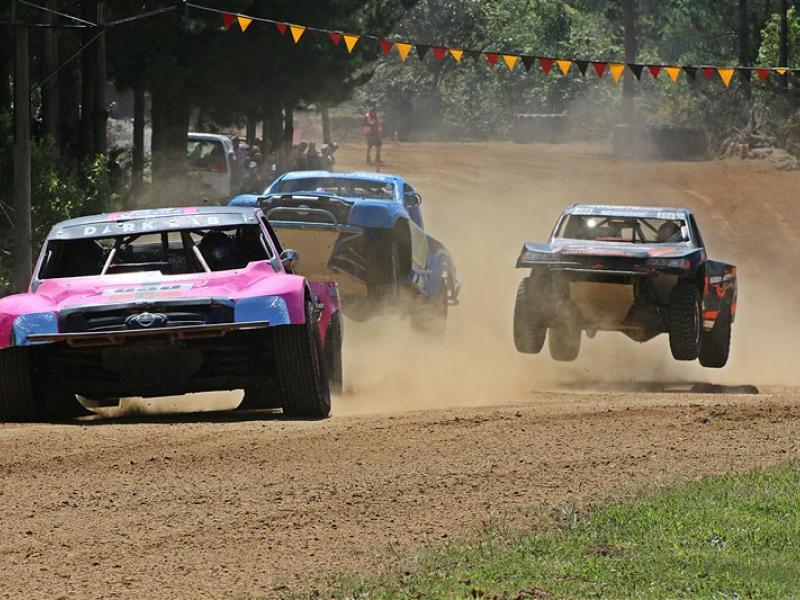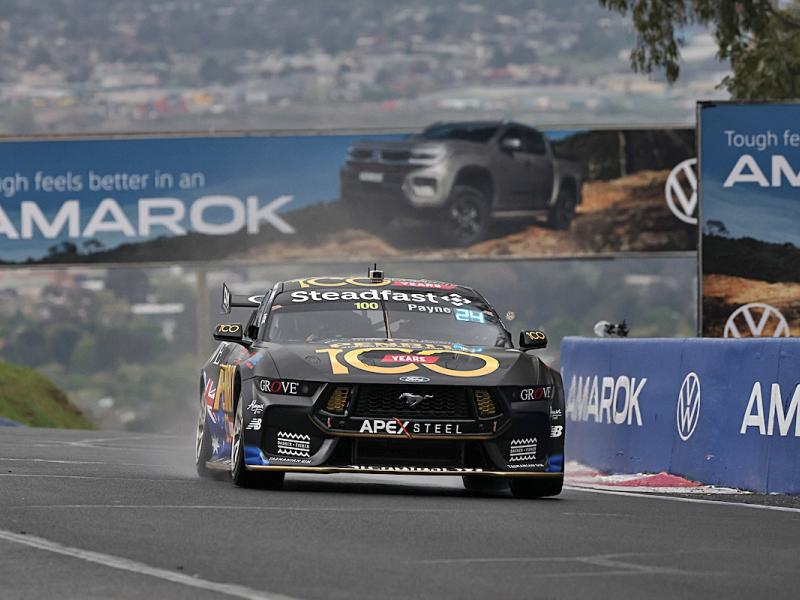|
Brakes and clutch
Sterling Clutch and brake started business more than 45 years ago as a gearbox repairer but soon morphed into a clutch specialist and when current owner/director Oliver Midgley took over the company 23 years ago he added brake parts and repairs to the menu of services available to the trade and general public.
Now brake parts and repairs have become the major component of the business and Oliver says that over the last decade he has seen an increased trend in disc rotor wear because friction materials have become more aggressive in modern brake systems.
According to Oliver the demise of Asbestos being used in brake pads wasn’t just environmentally and politically driven, the material itself could not handle the high temperatures developed in high performance brake systems and alternative materials had to be found to meet the demands of the OEM to bring their cars to a stop quickly.
Modern vehicle design has added more weight to the vehicle through safety systems, entertainment systems and air-conditioning as well cars having more aerodynamic bodies and addenda means less airflow for brake cooling and again higher temperatures for the friction materials to deal with.
The trend to reduce un-sprung weight in a vehicle to improve handling has also led to the brake rotor being made lighter and with less tolerance for wear. With lower mass the rotors run at a higher temperature giving rise to higher wear rates of both pad and rotor.
In terms of overall trends in the brake industry Oliver feels the value of unnecessary repairs is staggering brought about by lack of or incorrect diagnosis of the original problem. He feels with the advent of hybrid vehicles and regenerative braking systems on modern vehicles that the brake specialist will need to become more au fait with electronic and electrical systems. Training is going to become even more necessary for the industry to keep pace with technology in his opinion.
It will be sometime however before the aftermarket sees regenerative technology such as that used on the all-electric Nissan Leaf, but Oliver says that friction braking wear will eventually reduce and he reckons there will eventually be a reduction in brake dust. A plus for those clean wheel fanatics amongst us.
Scan tools don’t always find the answer though according to Oliver when it comes to brake systems, and he says that the Sterling technicians do most of their diagnosis by simply understanding the system, knowing each component, its location and its function.
“The cars that are easily fixed by independent service centres will eventually disappear and the franchise holders will have a stronger hold on the market,” says Oliver. “Along with specialists such as members of the NZ brake and clutch specialists association.”
“You can already see now where the industry is at. There are many people taking the easy bits such as lubrication, tyres, brakes and exhaust but who will look after the too-hard basket items?
In the world of clutches Oliver reckons the Dual Mass Flywheel is still not well understood by the service industry and that many are replaced unnecessarily because workshops do not have the tools to diagnose what is at fault and because you cannot see the inside of the unit or they are not replaced when they should be.
The DMF in his opinion is essentially a two piece flywheel separated by damping springs.
“The biggest problem is that less than half the total mass is available as a heat sink (to absorb the heat generated when a clutch slips) thus the temperature rise is greater with consequent surface damage and distortion,” he says.
“Excessive machining only makes the problem worse, there is less metal to absorb heat and thus a greater temperature rise.”
Clutch technology from LuK
Since its inception in 1965, LuK says it has proven itself the clutch industry leader due to its continuous innovations and uncompromising approach to quality. The combined efforts of over 3500 engineers and technicians within LuK’s 30 research and development centres around the world have led to numerous product innovations, such as the LuK dual mass flywheel (DMF) and the LuK damped flywheel clutch (DFC).
The popularity of higher performance engines and higher torque diesel engines is rapidly increasing. Although different, these vehicles all require clutches with higher transmission moments, whether due to increased power, reduced space or higher torque. This translates to a higher clamp load and therefore increased pedal force. However, drivers both expect and demand clutches with reduced actuation force. The solution is another example of technology developed by LuK; the self-adusting cltch (SAC).
The most important advantages of this type of design in relation to other types are:
• Low disengagement forces, which remain constant throughout the entire service life
• High levels of driving comfort throughout the entire service life
• Increased wear reserves, and therefore longer service life due to automatic wear adjustment
• The over-travel of the release bearing is limited by the diaphragm spring stop
This in turn results in a whole range of secondary advantages:
• No further need for servo systems (on utility vehicles)
• Simpler release systems
• Shorter pedal travel
• Uniform pedal forces across the entire range of engines
• New possibilities for reducing clutch diameters (torque transfer)
• Shorter release bearing travel throughout the service life
The principle of the self adjusting clutch (SAC)
The LuK wear adjustment feature works on the following principle: the sensor spring determines the increased release load (due to wear) and correctly compensates for the reduction in facing thickness.
The diaphragm spring is supported by the sensor spring, which replaces one of the pivot rings in a conventional clutch. When the sensor spring senses an increase in load due to wear, it relaxes allowing a gap to form between the clutch cover and the diaphragm spring. An adjuster ring consisting of a series of serated ramps rotates (assisted by two or three small coil springs) to fill the gap created by the sensor spring relaxing. When the clutch is disengaged the diaphragm spring returns to its original operating angle and therefore its original operating load.
An additional advantage is the higher wear capacity, which no longer depends on the length of the diaphragm spring curve (as in conventional clutches), but rather on the ramp height of the adjuster ring, which can easily be increased from 4 mm to 10 mm for larger clutches.
The SAC represents a decisive step towards the development of clutches with high durability.
The LuK SAC special tool
To make sure you fit your next LuK SAC correctly the first time every time, the use of the LuK special tool is indispensable. An SAC must not be engaged without flywheel and clutch pressure plate in order to avoid any damage to the adjusting ring. And that is exactly what the special tool does. It is available for purchase from LuK distribution partners.
Bosch Brakes – the competitive edge
Braking systems have been a vital part of Bosch since the company began 125 years ago. Workshops after a competitive edge in the market recognise that using Bosch products, in conjunction with Bosch training and diagnostics, will provide them with a complete set of tools for the job.
|
Bosch and PBR
Bosch says it is hard to go past a product offering that now includes the full range of PBR products as well as Bosch brake parts.
Bosch brake pads and shoes have been developed specifically for the Australian market, utilising Bosch’s global knowledge of friction material and vehicle dynamics.
PBR has been a major part of the Australian automotive scene since 1927 and maintained a solid reputation for supplying high-quality parts to the aftermarket. With this in mind, Bosch continues to supply the PBR brand to the aftermarket with quality hydraulic brake components, disc rotors, disc calipers, park brakes and brake consumables.
The range of Bosch and PBR brake parts for the aftermarket includes:
• Brake pads
• Brake shoes
• Replacement ABS components
• Master Cylinders
• Wheel Cylinders
• Brake Hoses
• Service Kits
• Calipers
• Park Brakes
• Disc rotors
• Brake fluids and greases
For more information visit www.bosch.co.nz
VTEQ Brake testers
According to its distributor AECS, the VTEQ brand has been producing roller brake testers and slip plates for more than 20 years. During the late 1980s slip plates where about as popular as roller brake testers. Yet the lack of repeatability of brake results on slip plates meant that most countries around the world have banned these from periodical (WoF) testing. AECS has not asked VTEQ to restart production of side slip plates for NZ even though the purchase of slip plates would be considerably cheaper than rolling roads. The investment required for a workshop or testing station is still sufficiently high that repetitive and meaningful brake results are expected from the equipment.
Roller brake testers specifically for trucks need large diameter rollers or else the contact area with the tyre is too small. The full brake force of a laden truck needs to be transferred onto a very small patch of rubber which in many cases separates from the tyre casing some kilometres after the brake test. In most European countries a minimum brake roller diameter is part of the homologation process for rolling roads.
The surface of the rolling road needs to have a minimum friction coefficient and maintain this throughout the life of the rolling road. Simply put, a smooth shiny roller cannot stress the brake system of a truck or a car. The brake roller will complete a test but the results are not transferable to road conditions. AECS says that VTEQ is the only company putting in writing that their closed cast welded brake rollers will meet the legally required minimum friction coefficient for at least 50,000 tests.
The weight of a vehicle needs to be taken into account when a brake test is performed as a heavier vehicle needs more brake force to stop in the legal required distance. This is why a weighing system is part of the VTEQ roller brake testers.
AECS supplies any type of VTEQ roller brake tester, from a simple 6KN analogue brake tester with needles, to a sophisticated but sturdy 40KN truck brake test lane with simulated load, side slip and free play detection equipment.
Repairing suspension components
Established in 1971 by Brian Blackie, Bricon Engineering was set up to do general engineering work but since then the company has also become an NZTA accredited specialist in repairing steering and suspension components.
Brian’s son Brent took over the helm in the 1990s and bought the business outright in 1994. Brent carried on the family tradition of innovation and has further developed new protocols for remanufacturing and repairing modern suspension as new models and new technology has rolled out.
“There are only two companies including ours which are accredited by NZTA to remanufacture steering and suspension components,” says Brent. “You must be certified by NZTA to carry out any repair on steering components, so we cater very much for a niche market.
Brent says that he is concerned about the resurgence of “injection” work – where people are injecting resin into steering joints as a quick fix to get a vehicle back on the road.
“This practice was outlawed by the government more than 14 years ago and this practice is completely dangerous and not to be recommended to any customer under any circumstance.
All reconditioned steering components from Bricon Engineering are refurbished on site at their CNC-equipped workshop in Mangere Bridge which will be relocating to the North Shore at the end of March 2011. The reconditioned components are fully certified and backed up by a normal industry warranty.
Brent says that Bricon Engineering will consider jobs that other people aren’t prepared to take on such as classic and vintage suspension. Brent previously created some stub axles for a Briscoe vintage car, a process that saw him create the patterns from scratch, cast the metal and then machine the units.
Bricon also tackles heavy truck suspension for Australian customers and they recently landed a job to manufacture brand new tie rod ends (including housings) for an overseas defence customer.
|





